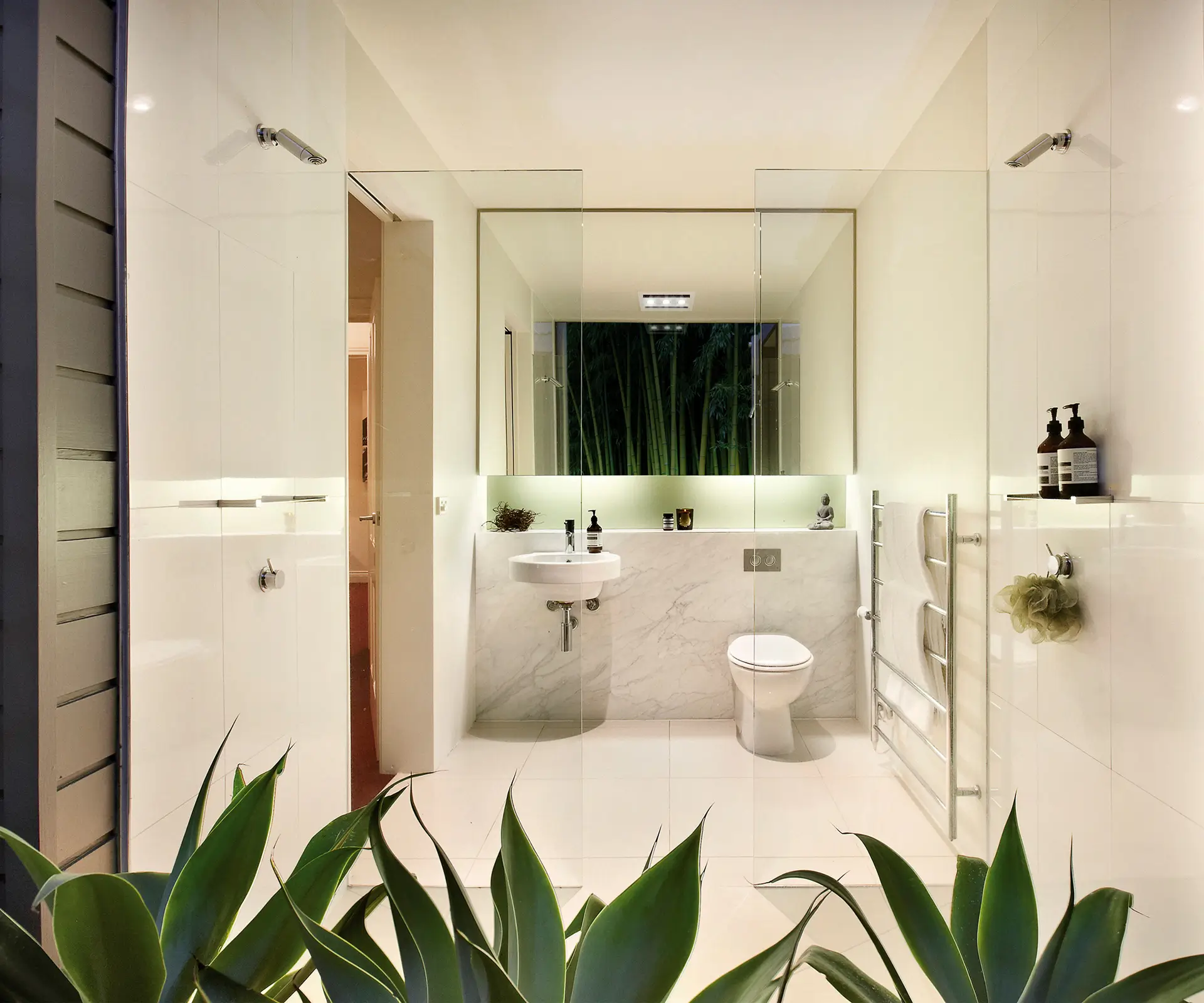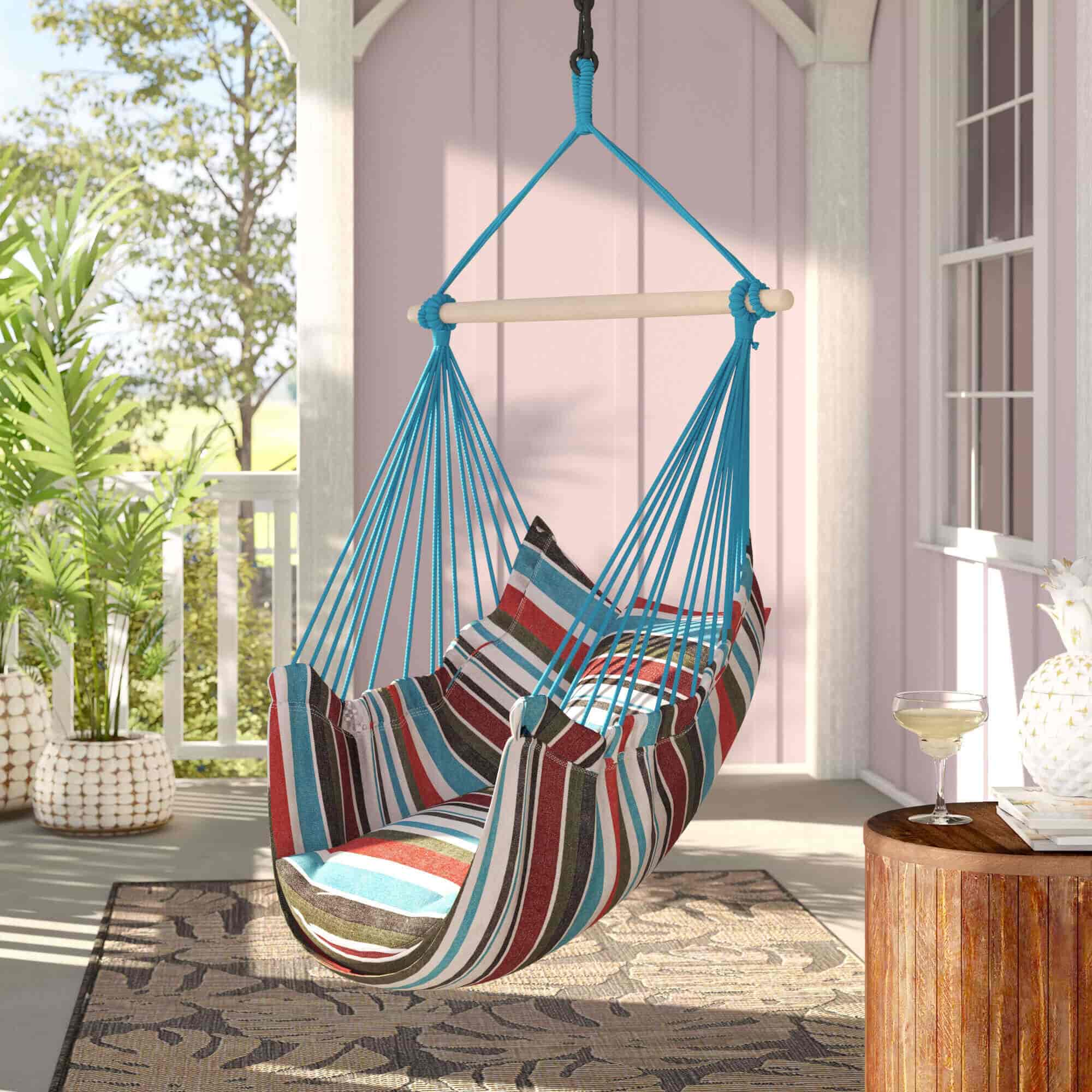An eco-friendly bathroom remodelling project not only improves the look of your home but also supports living a sustainable and ecologically conscious lifestyle. Every step of the remodelling process gives you the opportunity to design a bathroom that not only fits your personal tastes but also leaves the least possible environmental impact, from choosing eco-friendly materials to installing water-saving fixtures or recycling previously used materials.
Renovating your bathroom in an eco-friendly manner is a fantastic way to reduce your environmental footprint and create a healthier space for you and your family. To help you get started, here’s a guide to help you plan your eco-friendly bathroom renovation…
Install Water-Efficient Fixtures and Fittings
source: Pinterest.com
Water-efficient fixtures are essential components of a sustainable and eco-friendly bathroom design, so here are some options you can consider:
Low-Flow Showerheads – Install low-flow showerheads that restrict water flow without compromising on the shower experience. These fixtures can significantly reduce water usage compared to traditional shower heads while still providing adequate water pressure.
Low-Flow Taps – Replace existing taps with low-flow models that have aerators to mix air with water, reducing overall water consumption without sacrificing performance.
Dual-Flush Toilets: Consider installing dual-flush toilets that offer two flushing options: one for liquid waste and another for solid waste. This allows users to select the appropriate flush volume, conserving water with each use.
Water-Efficient Shower Systems: Consider installing water-efficient shower systems that incorporate features like flow restrictors, aerators, and pressure-balancing valves to optimise water usage while maintaining comfort and performance.
By incorporating water-efficient fixtures and technologies into your bathroom design, you can significantly reduce water consumption, lower utility bills, and contribute to environmental conservation efforts.
Use Energy-Efficient Lighting
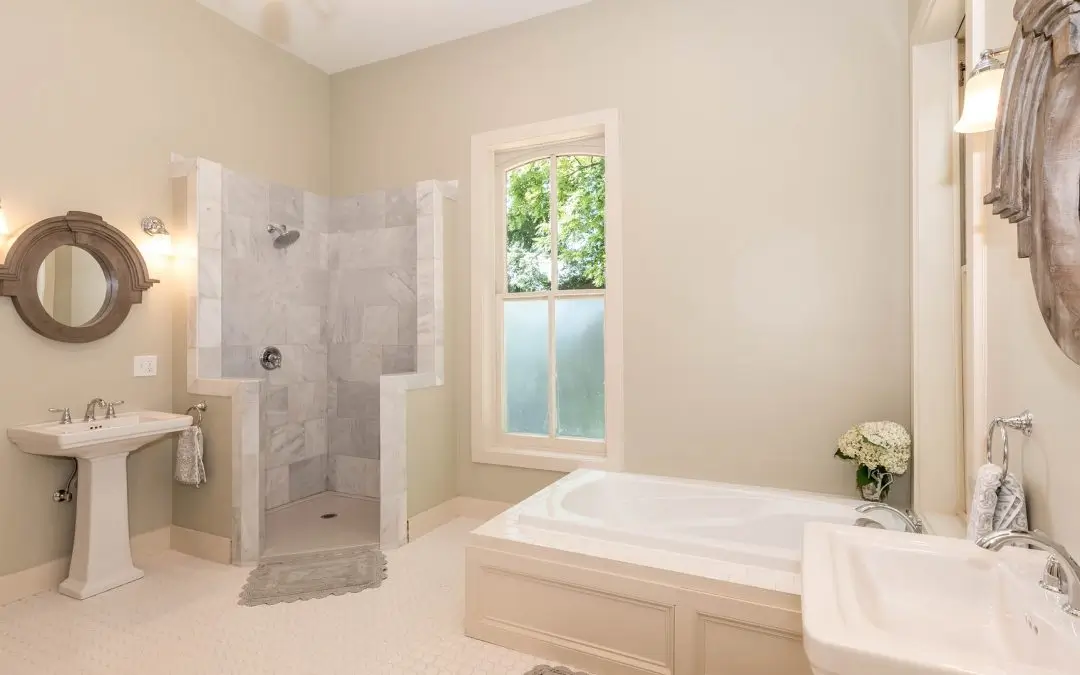
source: westcoastdesignbuildfl.com
Use LED or CFL bulbs in your bathroom lighting fixtures. These bulbs consume less energy and last longer than traditional incandescent bulbs. Consider installing dimmer switches to further reduce energy usage.
Aim for Natural Ventilation
Incorporating natural ventilation into your bathroom design can be beneficial for maintaining indoor air quality, managing moisture levels, and reducing the need for mechanical ventilation systems. Here are some strategies to achieve natural ventilation in your bathroom:
Windows – Install operable windows in the bathroom to allow for the intake of fresh air and the expulsion of humid air. Position windows strategically to facilitate cross-ventilation, which involves creating openings on opposite walls to promote airflow. Use window treatments that can be easily opened and closed to control airflow as needed.
Operable Skylights – If the ceiling is the only option for a window then you could place operable skylights in the ceiling to provide additional ventilation and natural light. Skylights can be equipped with sensors or remote controls for easy operation and can help create a stack effect, where warm air rises and exits through the skylight while drawing cooler air in through lower openings.
Plants and Greenery – Incorporate indoor plants in the bathroom, as they can help improve air quality by absorbing carbon dioxide and releasing oxygen. Certain plants, such as spider plants and peace lilies, are known for their air-purifying properties and can thrive in the humid environment of
Recycled or Sustainable Materials
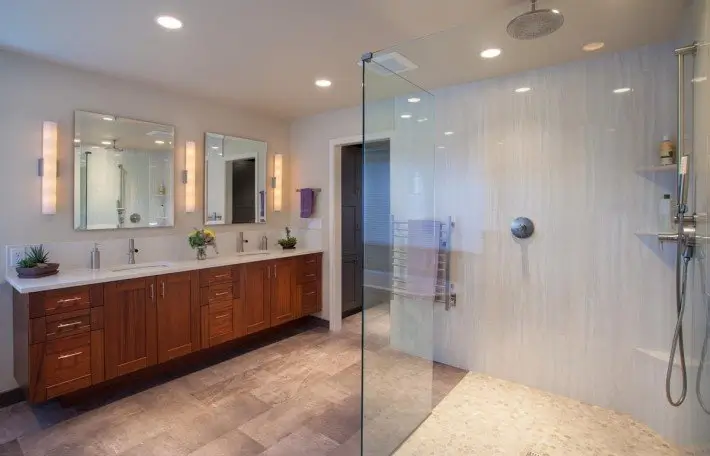
source: squaredealremodel.com
Choose eco-friendly materials for your bathroom renovation. Look for products made from recycled materials or sustainably sourced materials such as bamboo, reclaimed wood, or recycled glass tiles. Consider using reclaimed or salvaged fixtures and furnishings to reduce waste. Repurposing existing bathroom fixtures and materials is a sustainable approach to renovating your bathroom. Rather than replacing cabinets, vanities, or wooden trim, consider refinishing or repainting them. This can give them a fresh appearance without the need for new materials.
Salvage wood from old furniture, pallets, or construction sites to create new shelving, countertops, or accents in your bathroom. Reclaimed wood adds character and warmth to the space while reducing the demand for new timber. Explore salvage yards or online marketplaces for secondhand fixtures like sinks, taps, or light fixtures. With a little cleaning and restoration, these items can become focal points in your renovated bathroom.
Get creative with upcycled decor items such as mason jars, vintage mirrors, or repurposed containers for storing toiletries or organising small items. These little touches can add personality to your bathroom while reducing waste, save money, and create a unique and environmentally friendly bathroom renovation.
Fuel Efficient Water Heating
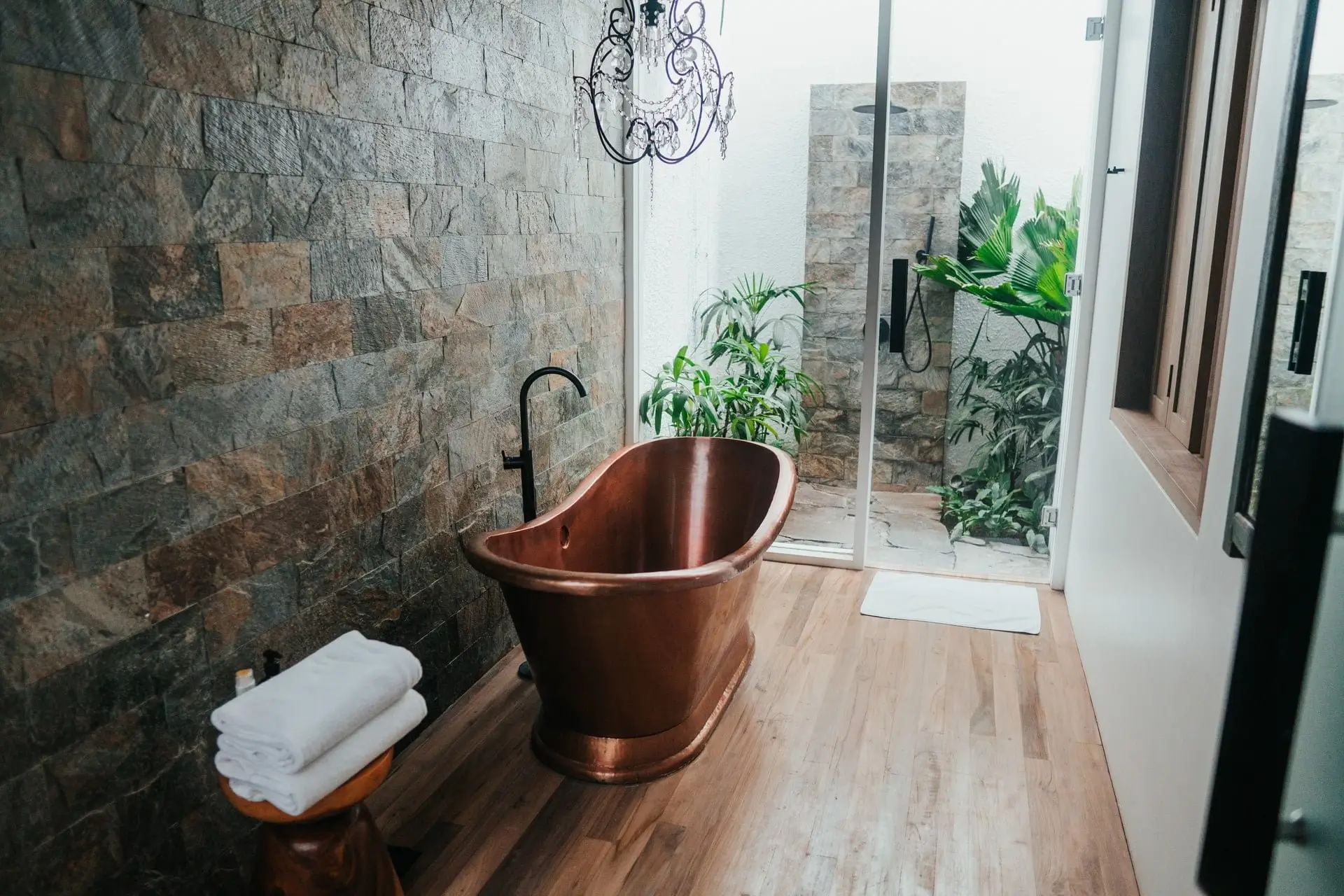
source: unsustainablemagazine.com
Install a water heater with a high energy efficiency rating. Consider options like tankless water heaters or solar water heaters, which can significantly reduce energy consumption compared to traditional tank-style heaters.
When it comes to water-efficient heating specifically for bathrooms, there are several strategies and technologies you can consider:
Tankless Water Heater – Consider installing a tankless water heater specifically for the bathroom. These heaters provide hot water on demand, so you don’t have to wait for a tank to fill up with hot water, reducing water waste.
Timer or Motion Sensor Controls – Install timers or motion sensors for bathroom heaters, such as radiant floor heating or towel warmers. This ensures that these heaters only operate when needed, reducing energy and water usage.
Solar Water Heating – If feasible, install a solar water heating system specifically for the bathroom. Solar water heaters use sunlight to heat water, reducing the need for electricity or gas and conserving water.
Insulation and Waterproofing
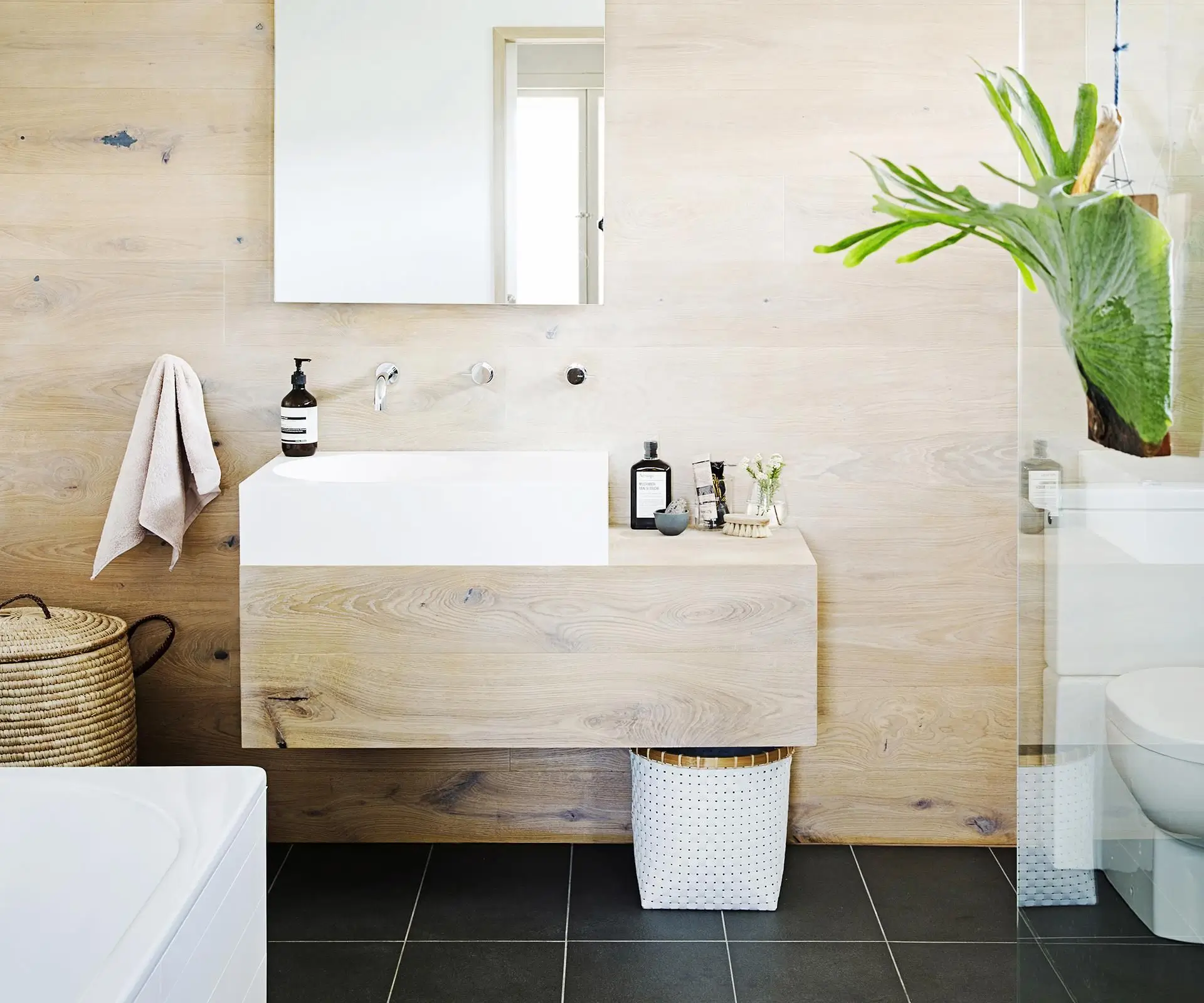
source: pinterest.com
Ensure your bathroom is properly insulated to prevent heat loss and reduce energy usage for heating. Proper insulation helps maintain comfortable temperatures and reduces the workload on heating systems. Properly insulate hot water pipes to reduce heat loss and ensure that hot water reaches fixtures quickly, minimising the need to run the tap and waste water while waiting for it to heat up. It is also advisable to use eco-friendly waterproofing materials and moisture barriers to prevent water damage and mould growth. Choose products that are non-toxic and environmentally friendly. As well as addressing areas that need waterproofing or a moisture barrier, you could perhaps use leak detection devices, which can identify and alert you to any leaks promptly. Addressing leaks as soon as they happen can prevent significant water waste and damage to your home.
By incorporating these eco-friendly practices into your bathroom renovation, you can create a space that is not only beautiful and functional but also environmentally sustainable. Remember to research products and materials thoroughly to ensure they meet your sustainability goals.

